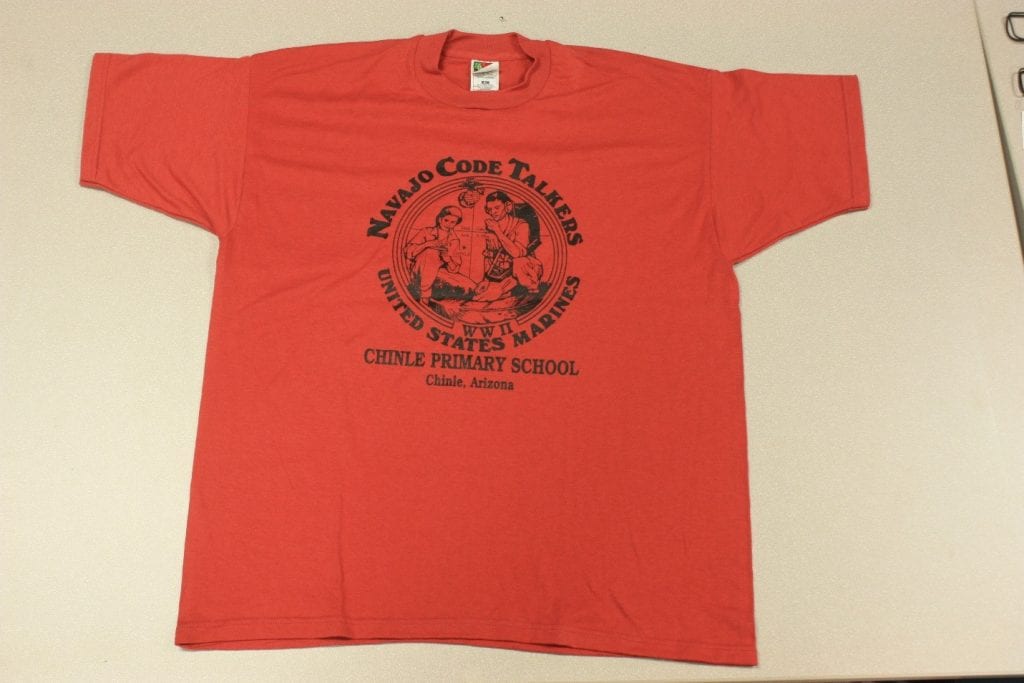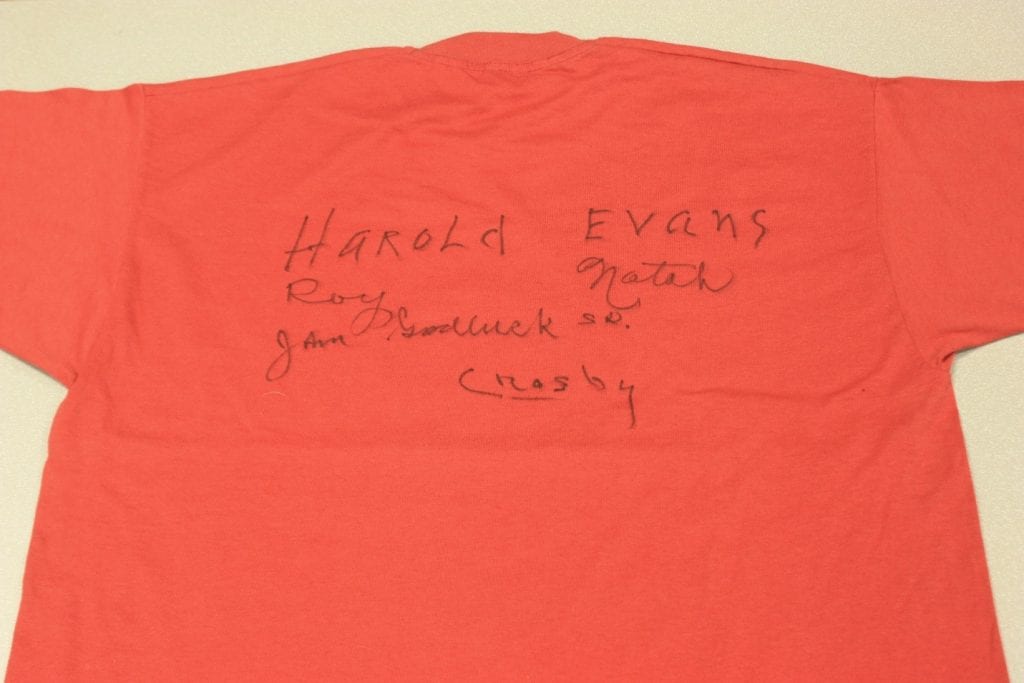
The code alphabet created by the original twenty-nine Navajo Code Talkers on their first day. AHS Collections.
During Worl War II, the first Navajo Code Talkers created a unique code that would prove vital to America’s victory in the Pacific. The Navajo were not the first tribe to use their language to transmit messages for the United States during a war. During World War I, Cherokee soldiers became the first known code talkers in the US military; in October 1918, eight Choctaw joined them. Philip Johnston, a World War I veteran who grew up around the Navajo, discovered in early 1942 that the military was experimenting with codes. Johnston proposed the Navajo language, but Marine Corps officials were hesitant. The U.S. military knew that German authorities discovered America’s use of Native languages in World War I and sent students to learn as many as they could. German students struggled to learn the languages, especially Navajo, but the U.S. was still cautious of creating a large-scale code talker program. After demonstrating the unique Navajo language, military officials were convinced and ordered the recruitment of the first Navajo Code Talker group.
There were three requirements for recruitment: pass basic Marine training, be fluent in both Navajo and English, and be 17-30 years old. Many Navajo were eager to join but did not fit the requirements; in fact, some lied about their age to join. In May of 1942, the first class of twenty-nine men left the Navajo Nation and learned their assignment: to create a new military code using the Navajo language for transmitting messages in combat situations and to memorize the entire code.
Their task had two parts. First, they created an alphabet. They chose a simple English word that began with each letter of the alphabet; the Navajo translation of that English word then represented that letter (Z = “Zinc” = Besh-do-tliz). Second, they created a dictionary of code words for the military words they would encounter. The Navajo language had no translations for military terms, so the Code Talkers chose Navajo concepts with visual or verbal similarities to the original term (“Bomber plane” = “Buzzard” = Jay-sho). Some words were chosen because they sounded similar (“Delay” = “Deer Lay”). The original twenty-nine men created 211 terms. By the end of the war, over 400 Code Talkers memorized 411 code terms.
The Navajo Code Talkers first deployed to the Battle of Guadalcanal. Initially, their commanding officer was skeptical that the Code Talkers would be more efficient than other codes. After they beat traditional encoding methods by almost four hours, he changed his opinion. The Code Talkers participated in every major offense in the Pacific from Bougainville to Okinawa, earning special recognition at Iwo Jima. By then, they were so fast, reliable, and accurate that communicated the most important messages. In the first forty-eight hours at Iwo Jima, they transmitted over 800 messages without error. Four days after landing, a Talker relayed that Mount Suribachi had been taken.
Many other tribes also used their languages to encode communications, including the Assiniboine, Basque, Comanche, Meskwaki, Mohawk, Muscogee, and Tlingit, but the Navajo were the most organized and formalized of the World War II Code Talkers.

The front of a t-shirt commemorating a Navajo Code Talker visit to Chinle Primary School. AHS Collections, P2015.9.1.
At the end of the war, most of the Code Talkers returned home and were discharged. The possibility of war with the U.S.S.R. loomed, and because the Navajo code remained unbroken and effective, the military was prepared to use it again. The U.S. Marines prohibited the Code Talkers from speaking about the code, even with their families, and most Code Talkers were discharged as private or private first class with the code left off their discharge papers.
For twenty-three years, the Code Talkers remained silent. Finally, in 1968 the Code Talkers received their first public recognition at the 4th Marine Division reunion, followed by the first official Navajo Code Talker reunion in 1971. National recognition came in 1982, forty years after their recruitment. President Ronald Reagan declared August 14 as Navajo Code Talker day and asked the American people to pay tribute to the Navajo and other Native Americans who “gave their special talents and their lives so that others might live.”
The Navajo Code has always been an enigma. It was proposed by a non-native speaker from a language the country it saved had sought to erase. It was valuable and because of that was hidden away. It was proudly carried by men whose ancestors had called their land sacred long before the nation it served existed. The history of the Navajo Code Talkers, unlike many similar stories, is not told through official documents but carried in the hearts and words of those who lived it.

The back of a t-shirt signed by Navajo Code Talkers Harold Evans, John Goodluck, Roy (or Ray) Notah, and Billy Crosby when they visited Chinle Primary School. AHS Collections, P2015.9.1.C
Becca Morrison
AHS Collections Intern Summer 2020



